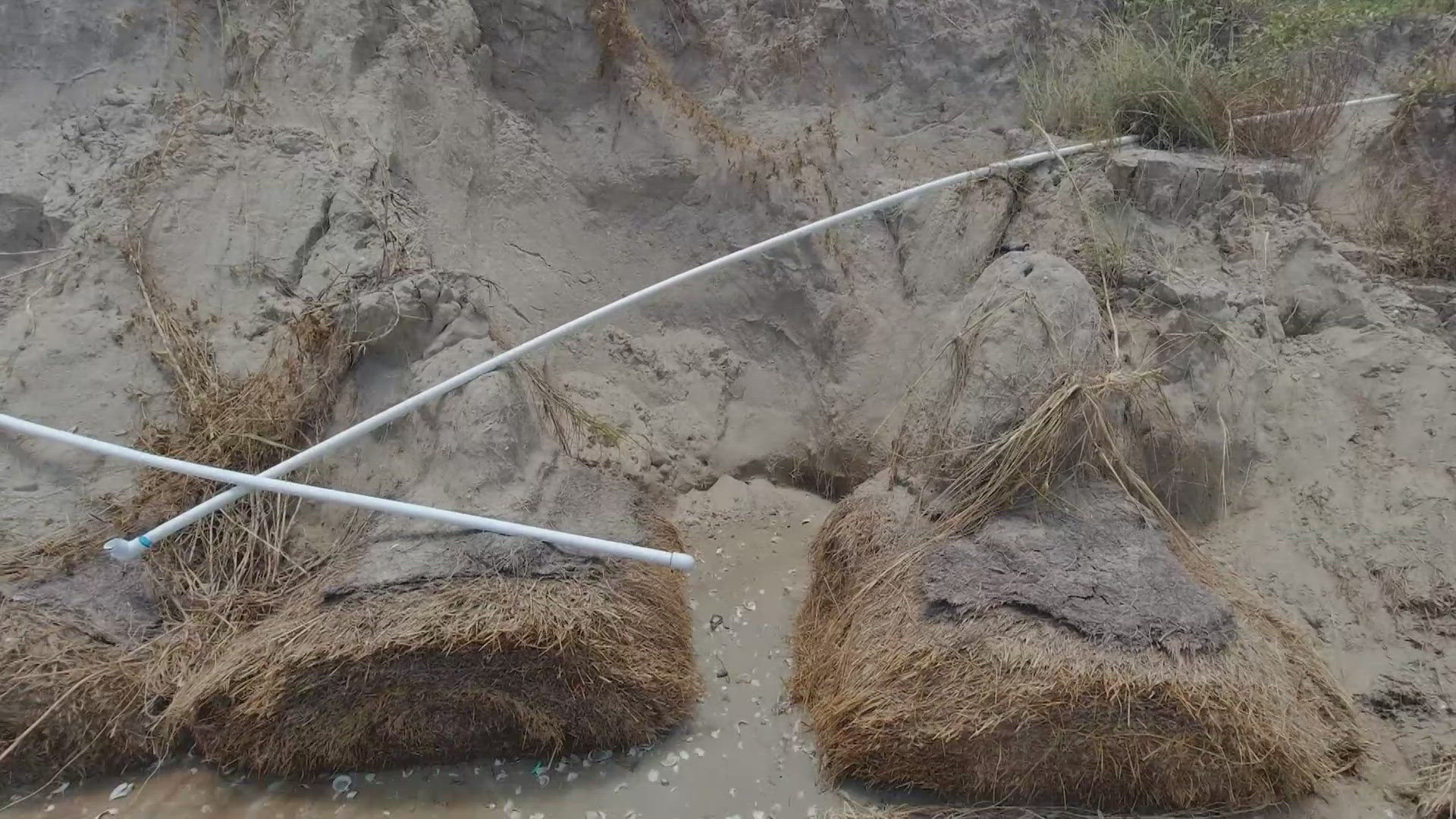GALVESTON, Texas — Haybales on the beach aren't a typical sight, but bales used to help create dunes after Hurricane Ike were revealed post-Tropical Storm Alberto.
"We had a few places that had some damages to the dunes but, realistically, most of them did well during the storm and held up,” said Angela Sunley, Deputy Director of Texas General Land Office Coastal Resources.
The GLO enforces the state’s open beaches and dune protection acts and teams like the one we followed on Tuesday use photos and GPS data to track impacts after weather events.
"We document all that information, and it aids us with looking at erosion hotspots where we may need to do projects," said Sunley.
The survey included both sides of San Luis Pass close to where we shot some video last week amid the storm. Alberto blew debris onto the Blue Water Highway near Surfside Beach.
The GLO is now working with Brazoria County to try and build things back up.
But, preventing erosion may be more challenging with rising sea levels, according to global risk management firm Guy Carpenter.
In Galveston alone, it said the water level has risen two feet over the last 100 years.
“The thing is, when you have these chronic changes of sea level rise and put these storms on top of the higher baseline level, then you have a higher probability of inundation and flooding,” said Kieran Bhatia, Guy Carpenter SVP of Climate Change.
That may mean addressing erosion more frequently and keeping the dunes doing their job.
"They’re critical to protecting public and private infrastructure," said Sunley. "They help us preserve not only the beach and semi-submerged land, but also the population behind it.”

